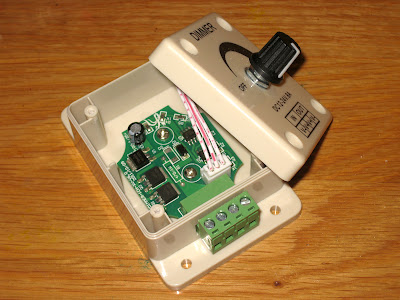Hi!
Sorry for reviving the thread, but I have some info to add if someone else finds this later.
I found this thread (and magic's page) after I already reverse engineered a similar dimmer and modded it to SSR freq. for a cheapo RIMS system I'm planning.
I also found that a 100uf cap got me in th 1Hz range.
The tip I have is, if you want to decrease freq. by adding capacitance, you can avoid desoldering the smd cap and risk damaging the pcb. You can just solder the new cap in parallell. This makes it easy to undo later as well.
I just cut the legs of the electrolyte to appropriate length, pretinned, added some fresh solder to the pads and soldered it in.
Cheers!








